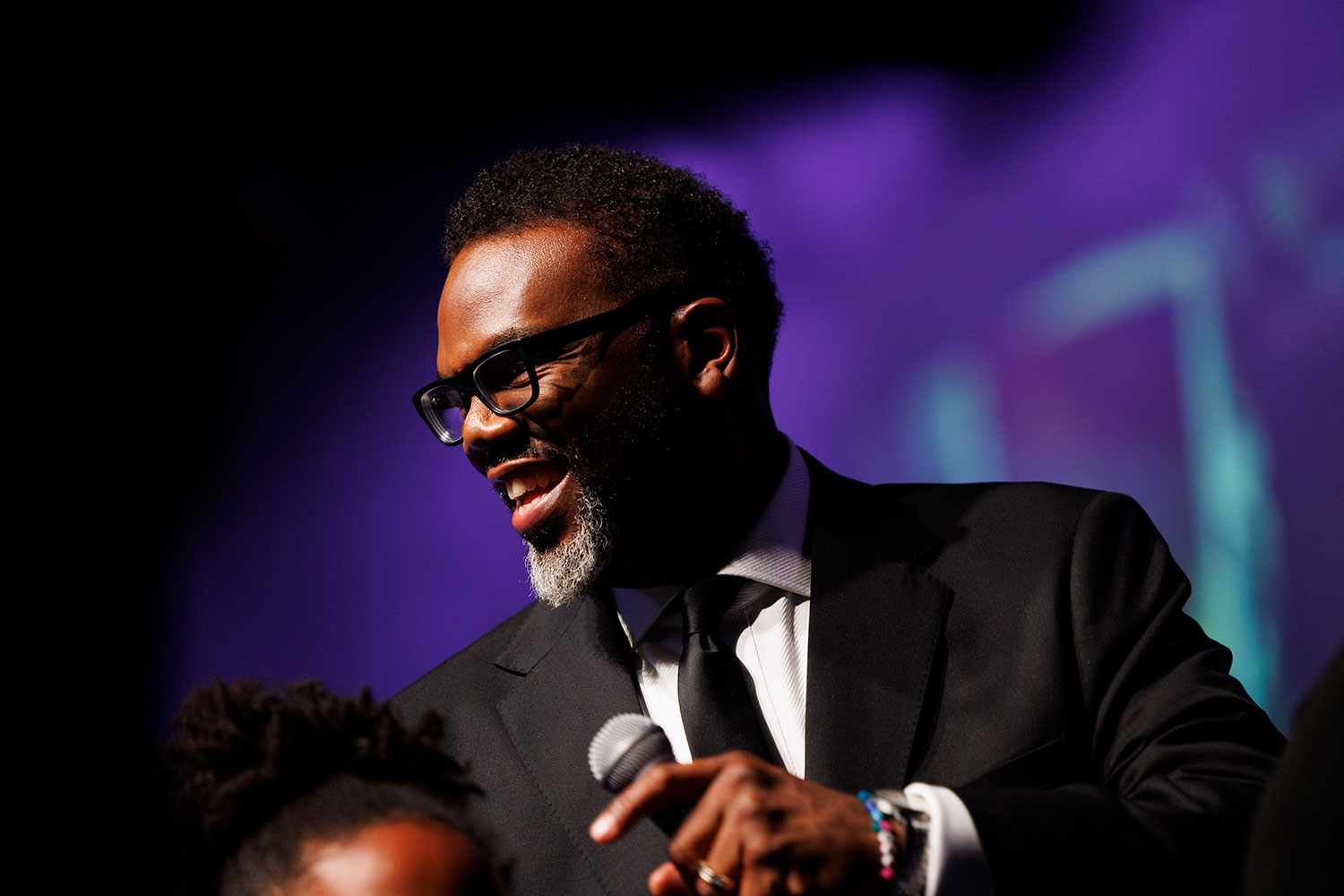“I’m struck by how much work it took to bring us to this moment and how many decades of slow grinding progress,” Mayor Brandon Johnson said toward the beginning of Monday’s inaugural address in the Credit Union 1 Arena on the University of Illinois-Chicago campus. “Think about the labor movement, which produced luminaries like my mentor and dear sister Karen Lewis, who mattered through social justice unionism and helped lead the multiracial, multicultural working class movement that organized its way to this moment. The same labor movement that raised wages, established the 40-hour workweek, and built the middle class in this city.”
Brandon Johnson’s mayoralty is seen as the culmination of teachers union militancy that began in 2012, when his predecessor Rahm Emanuel closed 50 schools. But as Johnson pointed out, the union movement that produced him has such a long history in Chicago that yes, it is striking that we’ve waited so long for one of its members to become mayor.
Chicago is home to a tradition of worker activism that goes back to the 19th Century, and has been central to the development of the American labor movement. The movement for an eight-hour day began here, in the 1860s. In 1867, the city’s Trades Assembly called a general strike to protest the state’s new eight-hour day law, which allowed employers to contract with workers for longer workdays. The strike failed, but the cause was taken up again on May 1, 1886, when 88,000 workers walked off the job. Three days later, at a rally in Haymarket Square, a bomb killed a police officer. Four anarchists were hanged for the attack. The Haymarket Affair turned the public against the eight-hour day movement, but unionists and socialists around the world adopted May 1 as a workers’ holiday. Johnson could have invoked the names of August Spies, George Engel, Albert Parsons, and Adolph Fischer, who were executed for the Haymarket Bombing.
Johnson could have invoked the name of Eugene V. Debs, who led the American Railway Union in the 1894 Pullman strike, to protest cuts in wages at the Pullman Palace Car Co. The strike was broken by the federal government, because it interfered with the mail, and Debs was imprisoned for flouting an anti-strike injunction.
Johnson could also have recited the 10 names on the Republic Steel Memorial Day Massacre Monument, in front of an old steelworkers’ union hall on Avenue O: Hilding Anderson, Alfred Causey, Leo Francisco, Earl Handley, Otis Jones, Sam Popovich, Kenneth Reed, Joseph Rothmund, Anthony Tagliori, Lee Tisdale. During the so-called “Little Steel” strike, those men were shot and killed by police officers while marching toward the mill to picket.
Like the protests against school closings, these were all defeats for labor, but they helped build the movement that lifted Johnson to the mayor’s office. Teachers are the city’s most militant unionists because public sector workers now dominate the labor movement. In 2020, according to the Bureau of Labor Statistics, there were 7.17 million union members in government jobs, against 7.08 million in private sector jobs.
Credit Union 1 Arena was packed with a pro-union crowd, chanting “CT-Who? CTU!” and “Chicago is a union town.” When the alders were introduced, the crowd cheered loudest for the democratic socialists: Jeanette Taylor, Rosanna Rodriguez-Sanchez, Carlos Ramirez Rosa, Angela Clay. When the special guests were introduced, the loudest cheers were for U.S. Rep. Delia Ramirez and Stacy Davis Gates, president of the Chicago Teachers Union.
Later in his speech, as he was reciting names of people he’ll need to build his “better, stronger, safer Chicago,” Johnson remarked, “This is what organizers refer to as a call in.” It’s also striking that it took so long for an organizer to become mayor, since community organizing was born here, with Saul Alinsky’s Industrial Areas Foundation. It’s even more striking because a local community organizer became president of the United States before one became mayor of Chicago.
As soon as Johnson got to his new office on the fifth floor of City Hall, he signed an executive order establishing a Deputy Mayor for Labor Relations, who will “foster, promote, and develop the welfare of the wage earners, job seekers, and retirees of Chicago, in addition to improving working conditions, advancing new job opportunities for employment, and protecting workers’ rights.”
This new Chicago is as close as we can get to a revolution within our democratic system. The protestors have the power. The grass is eating the cows. The radicals of 100 years ago, or even 10 years ago, are now the establishment.




